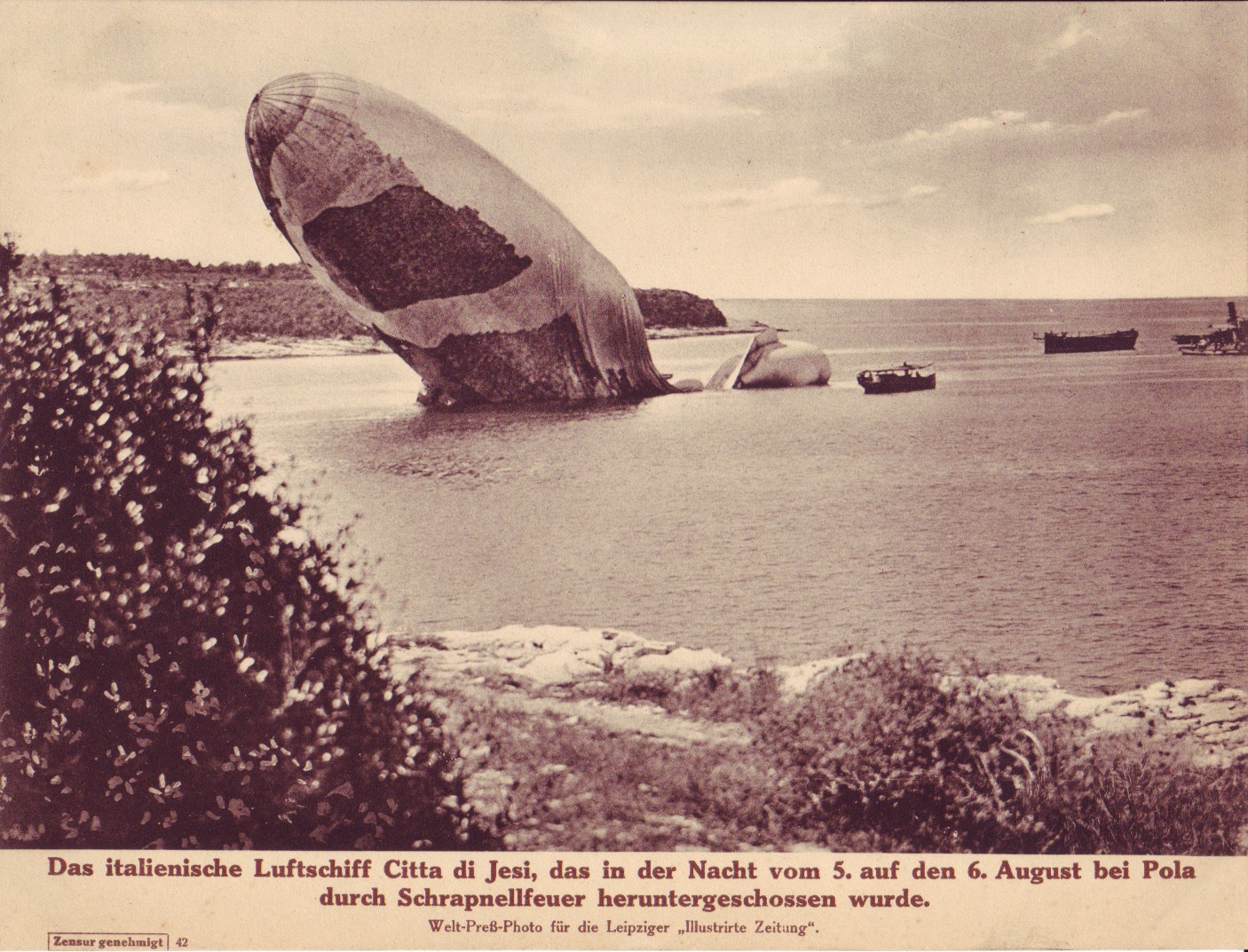|
V.1 Città Di Jesi
V.1 ''Città di Jesi'' was a semi-rigid military single-gondola airship made in 1914 by the ''Stabilimento Costruzioni Aeronautiche'' in Vigna di Valle, designed by Rodolfo Verduzio as the first aircraft of the "V-Class" airships and operated by Regia Marina (Royal Italian Navy). On 5 August 1915 it was destroyed by an Austro-Hungarian Army, Austro-Hungarian anti-aircraft artillery during the bomb raid on Pula. Development According to the 1910 Italian law for the strengthening of the aeronautics the construction of 9 airships was ordered by the army, including three small, five medium and one large aircraft. V.1 was designed by Italian Royal Army engineer Rodolfo Verduzio, who already participated on the designing of M-class airships with Gaetano Crocco, as large type of this series and build between 1913 and 1914. In October 1913, while the airship still wasn't finished, frigate captain Guido Scelsi, the head of the Royal Navy's aeronautical department, was appointed its comman ... [...More Info...] [...Related Items...] OR: [Wikipedia] [Google] [Baidu] |
Pula
Pula, also known as Pola, is the largest city in Istria County, west Croatia, and the List of cities and towns in Croatia, seventh-largest city in the country, situated at the southern tip of the Istria, Istrian peninsula in western Croatia, with a population of 52,220 in 2021. It is known for its multitude of ancient Roman Empire, Roman buildings, the most famous of which is the Pula Arena, one of the best preserved Roman amphitheaters. The city has a long tradition of wine making, fishing, shipbuilding, and tourism. It was the administrative centre of Istria from ancient Rome, ancient Roman times until superseded by Pazin in 1991. History Pre-history Evidence of the presence of ''Homo erectus'' one million years ago has been found in the cave of Šandalja near Pula. Pottery from the Neolithic period (6000–2000 BC), indicating Colonization, human settlement, has been found around Pula. In the Bronze Age (1800–1000 BC), a new type of settlement appeared in Istria, called ... [...More Info...] [...Related Items...] OR: [Wikipedia] [Google] [Baidu] |

